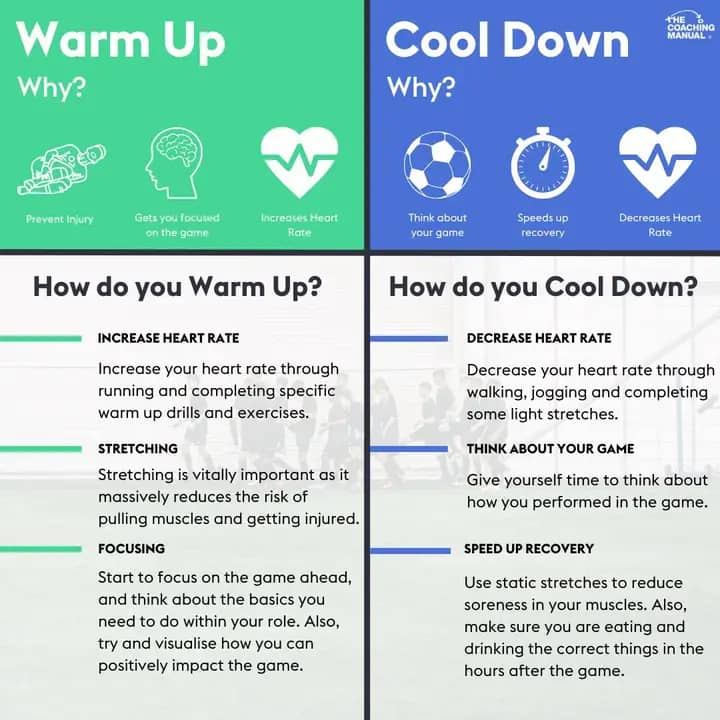In preparation for sport, the process of limbering to ready the body for aggressive activity remains key to ready the different body parts.
Equally so, the cooling down process is important.
It helps increase blood flow, improve flexibility, and reduce the risk of injury.

-
-
Reduces injury risk:
Warming up increases blood flow and muscle temperature, making them more flexible and less prone to injury.
-
Improves performance:
Warming up helps the body prepare for the demands of exercise, potentially leading to better performance.
-
-
Increases energy levels:
Warming up can help prepare the body for the exercise, leading to an increase in energy levels.
-
Prepares the heart and cardiovascular system:
Warming up gradually increases heart rate and blood flow, preparing the body for the exertion of exercise.

-
Dynamic stretching:
This involves gentle movements that mimic the activities you’ll be doing during your workout, like arm circles, leg swings, and torso twists.
-
Light cardio:
Activities like jogging, jumping jacks, or marching on the spot can help increase heart rate and warm up the muscles.
-
Specific exercises:Depending on the activity, you might do exercises like squats, lunges, or push-ups to target the muscles you’ll be using.
Cooling Down:
Cool down refers to the process of slowing down physical activity after exercise or becoming calmer after being upset or angry.
In the context of exercise, a cool-down involves gradually decreasing activity intensity to allow the body to return to its normal physiological state. It can also mean becoming less agitated or passionate.
-
-
Purpose:
A cool-down helps the body transition back to a resting state after exercise.
-
-
How to do it:
Gradually reduce activity intensity, such as walking after running or jogging after swimming.
-
Benefits:
Helps regulate heart rate, body temperature, and blood pressure. It also reduces muscle soreness and stiffness by allowing lactic acid to be cleared.
-
Examples:
Walking, light jogging, and stretching.
- Purpose: To calm down and reduce emotional intensity.
- How to do it: Take deep breaths, practice relaxation techniques, or spend time in a calm environment.
- Benefits: Helps reduce stress, anger, and other negative emotions.
- Examples: Taking a break, engaging in a calming activity, or talking it out with someone.
- Cool down (a person):









